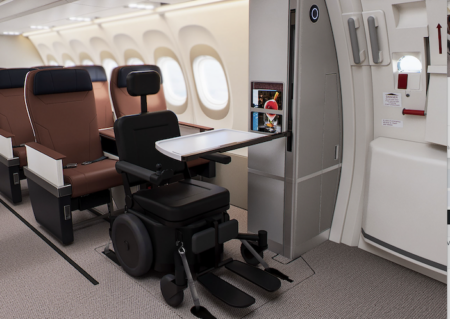According to research by Boeing, strong economic and passenger growth will be the main drivers of new aircraft demand in the Asia Pacific region. Boeing estimates the region’s airlines will need an additional 12,820 aircraft valued at US$1.9 trillion, representing 36% of the world’s new airplane deliveries over the next 20 years.
“Asia Pacific economies and passenger traffic continue to exhibit strong growth,” said Randy Tinseth, VP of marketing at Boeing. “Over the next 20 years, nearly half of the world’s air traffic growth will be driven by travel to, from or within the region. The Asia Pacific fleet will nearly triple, from 5,090 airplanes in 2012 to 14,750 airplanes in 2032, to support the increased demand.”
For long-haul traffic, Boeing forecasts twin-aisle aircraft will account for 28% of new aircraft deliveries. However, the airframer’s data projects that passenger airlines in the region will rely primarily on single-aisle aircraft to connect passengers, with single-aisles representing 69% of the new aircraft in the region.
“New low-cost carriers and demand for intra-Asia travel have fuelled the substantial increase in single-aisle airplanes,” said Tinseth. “Fuel-efficient airplanes like the Next-Generation 737 and 737 MAX help the growing number of low-cost carriers operate more efficiently and provide affordable fares to the emerging middle class.”
Meanwhile, researchers at Airbus have predicted that in that same 20-year period, airlines from the Asia Pacific region will take delivery of 10,940 new passenger and cargo aircraft, valued at US$1.8 trillion. This figure represents 37% of all new aircraft deliveries worldwide over the next 20 years, ahead of Europe, North America and the Middle East. In value terms, the region will account for 42% of the global market for new airliners, reflecting the higher proportion of widebody aircraft required in Asia-Pacific.
In the passenger market, the fleet of aircraft operated by Asia-Pacific carriers is expected to more than double in the next 20 years, from 4,960 aircraft today to over 12,130 jets, based on higher than average annual traffic growth of 5.8% and replacement of nearly 3,770 aircraft in service today. The Airbus Global Market Forecast went on to say that, largely owing to the surge in Asia Pacific megacities, carriers in the region will acquire 4,130 widebody aircraft over the next 20 years, representing 46% of worldwide demand.
Airbus also predicts a need for 3,350 twin-aisle aircraft, and around 780 very large aircraft with over 400 seats such as the A380 for the largest and in some cases most constrained airports.
In the single aisle market, the growth of new low cost operations is stimulating demand for these aircraft, particularly the larger types such as the A320/A321, adds Airbus. Since 2000, the average aircraft capacity operated by low cost carriers has grown by nearly 50%. In the next 20 years, the region will need 6,810 new deliveries of this type, representing over a third of the world total, say the findings.
Finally, Embraer has forecast that airlines in Asia Pacific, including China, will take delivery of 1,500 new jets in the 70 to 130-seat segment over the next 20 years (valued at US$70bn at list prices), representing nearly 20% of the worldwide demand for the segment in the period.
Of the region’s new deliveries, 65% are expected to support market growth while 35% will replace ageing aircraft being retired, according to Embraer. “Passenger traffic in the Asia Pacific region is mostly composed by secondary markets with low and medium demand densities of up to 300 passengers daily each way. Some 60% of those markets are not served non-stop, and around half of all markets served do not allow for same-day return travel,” said Paulo Cesar Silva, president & CEO of Embraer Commercial Aviation.




